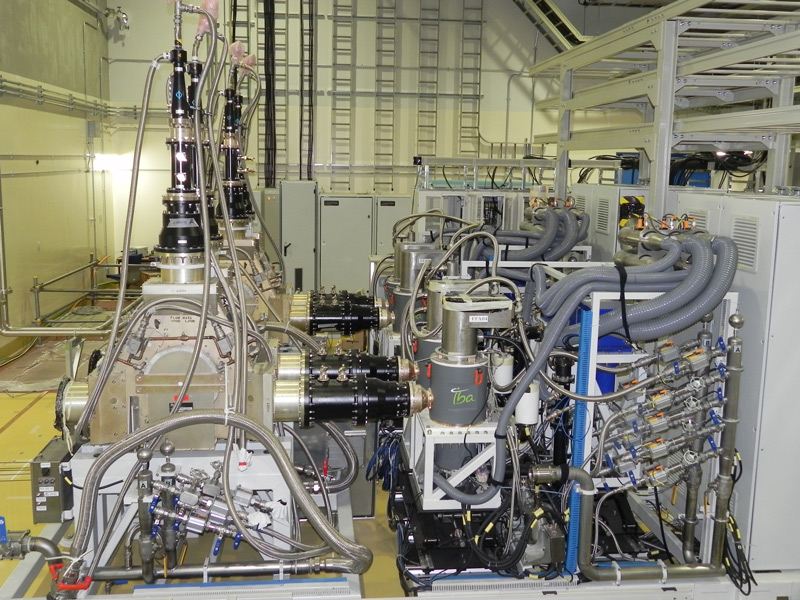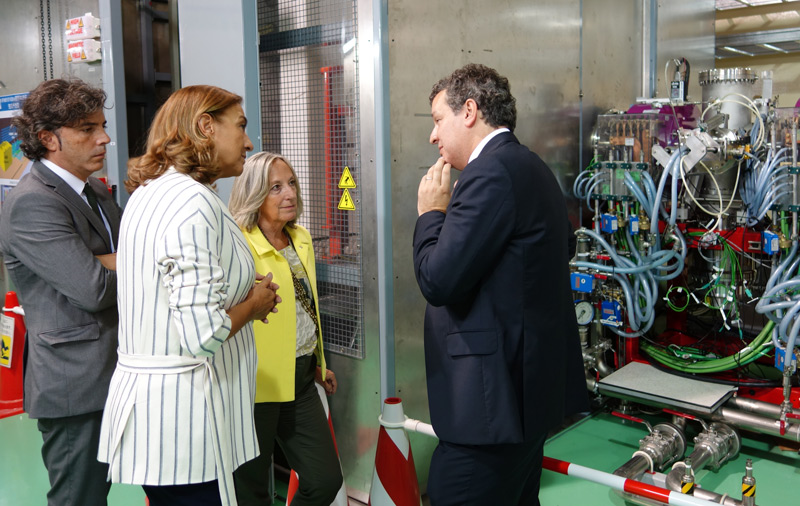The latest breakthroughs from the International Fusion Materials Irradiation Facility


The Broader Approach Agreement signed between Europe and Japan consists of three scientific projects that will contribute towards the design of future fusion reactors beyond ITER. The International Fusion Materials Irradiation Facility (IFMIF), in its Engineering Validation and Engineering Design Activities (EVEDA) phase, is evolving successfully celebrating important milestones in line with schedule and budget.
IFMIF will be a neutron source for the qualification of materials capable to withstand the impact of high energy neutron fluxes equivalent to those of deuterium-tritium reactions in a future fusion reactor. Two years ago, EVEDA provided the engineering design of the IFMIF plant and is currently validating the operation of each of its main three sub-systems consisting of the Linear IFMIF Prototype Accelerator (LIPAc), presently under installation and commissioning in the International Fusion Research Centre of the Japanese Atomic Energy Agency located in Rokkasho; the lithium loop successfully validated with the EVEDA Lithium Test Loop (ELTL); and the High Flux Test Module Double Compartment (HFTM-DC) validated in Karlsruhe (KIT).
As 2016 kicks off IFMIF has started ticking off plenty of tasks from its list. The activities that included the validation of the lithium loop were accomplished last year. Meanwhile, the corrosion/erosion tests of reduced activated ferritic martensitic steels (Europe’s EUROFER and Japan’s equivalent F82H), are being carried out in Brasimone (ENEA).
All validation activities related with the Test facility have also been accomplished. For example, it has been demonstrated operating the HFTM-DC in HELOKA loop that specimens can be irradiated at temperatures between 250 °C and 550 °C with a uniformity of +/-3%. Two sets of around 40 specimens can be tested each at 12 different temperatures.

In turn, LIPAc, is designed to run a deuteron beam of 125 mA at 9 MeV in continuous wave that will validate the IFMIF accelerators. This linear accelerator, small in size but with a 1.1 MW beam power is under installation and commissioning in Rokkasho. Works are advancing at the International Fusion Energy Research Centre of the Japanese Atomic Energy Agency where the commissioning of the deuteron injector, designed and manufactured by CEA is being accomplished. The arrival of the radio frequency quadrupole by Italy’s Instituto Nazionale de Fisica Nucleare is expected in February this year. It will be commissioned together with the accelerator systems provided by CIEMAT such as the radio frequency power sources, the medium energy beam transport line, and the diagnostic plate. The superconducting cryomodule, which is going to accelerate the beam to meet the target energy output, will be assembled in a clean room facility in Rokkasho during 2017.
There is also good news in terms of planning. During the Broader Approach Steering Committee meeting held towards the end of last year, a resource-loaded schedule for the accomplishment of the Accelerator facility was approved together with an extension until December 2019 with no additional funds respecting the credits assigned to these projects in 2007 when the Broader Approach Agreement was signed.
